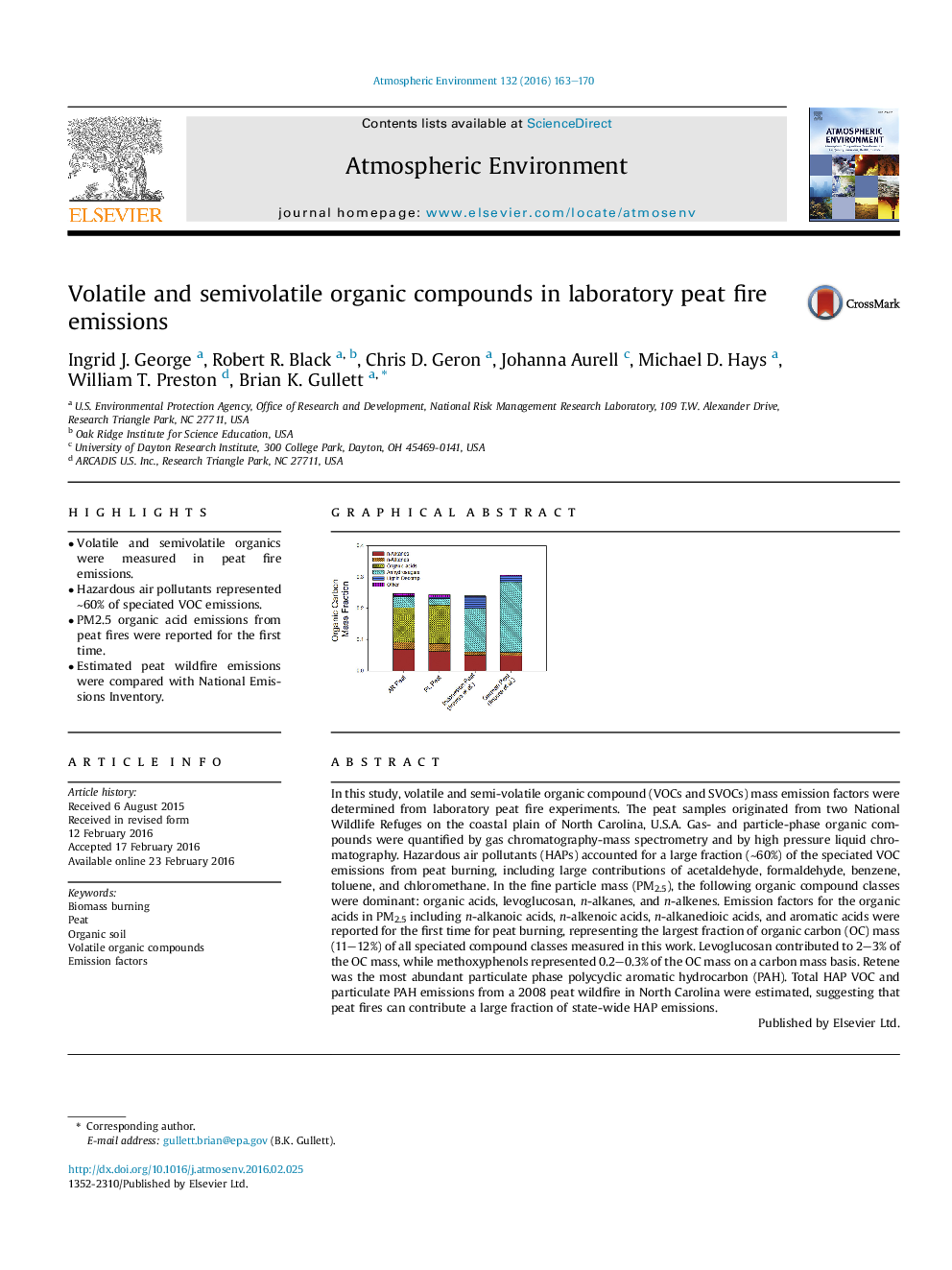| کد مقاله | کد نشریه | سال انتشار | مقاله انگلیسی | نسخه تمام متن |
|---|---|---|---|---|
| 6336372 | 1620342 | 2016 | 8 صفحه PDF | دانلود رایگان |
- Volatile and semivolatile organics were measured in peat fire emissions.
- Hazardous air pollutants represented â¼60% of speciated VOC emissions.
- PM2.5 organic acid emissions from peat fires were reported for the first time.
- Estimated peat wildfire emissions were compared with National Emissions Inventory.
In this study, volatile and semi-volatile organic compound (VOCs and SVOCs) mass emission factors were determined from laboratory peat fire experiments. The peat samples originated from two National Wildlife Refuges on the coastal plain of North Carolina, U.S.A. Gas- and particle-phase organic compounds were quantified by gas chromatography-mass spectrometry and by high pressure liquid chromatography. Hazardous air pollutants (HAPs) accounted for a large fraction (â¼60%) of the speciated VOC emissions from peat burning, including large contributions of acetaldehyde, formaldehyde, benzene, toluene, and chloromethane. In the fine particle mass (PM2.5), the following organic compound classes were dominant: organic acids, levoglucosan, n-alkanes, and n-alkenes. Emission factors for the organic acids in PM2.5 including n-alkanoic acids, n-alkenoic acids, n-alkanedioic acids, and aromatic acids were reported for the first time for peat burning, representing the largest fraction of organic carbon (OC) mass (11-12%) of all speciated compound classes measured in this work. Levoglucosan contributed to 2-3% of the OC mass, while methoxyphenols represented 0.2-0.3% of the OC mass on a carbon mass basis. Retene was the most abundant particulate phase polycyclic aromatic hydrocarbon (PAH). Total HAP VOC and particulate PAH emissions from a 2008 peat wildfire in North Carolina were estimated, suggesting that peat fires can contribute a large fraction of state-wide HAP emissions.
276
Journal: Atmospheric Environment - Volume 132, May 2016, Pages 163-170
